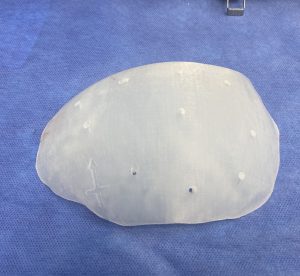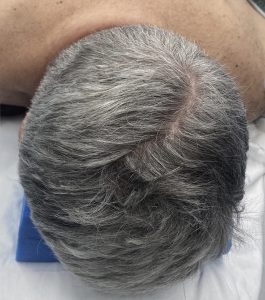Background: Plagiocephaly is the most recognized deformational skull shape deformity in both children and adults. While it affects the entire skull to some degree the back of the head is usually the most affected, often initiated in utero or shortly after birth. While many assume that the flat back of the head is an irrelevant aesthetic issue in an adult, particularly if they have hair, nothing could be further from the truth. Hair or no hair many adults seek out how to improve this long lasting skull shape concern.
Without question the optimal way to treat the asymmetric back of the head is with a custom designed skull implant. Besides the wide variety of asymmetric shapes that occur in plagiocephaly on the back of the head, most of these wrap around and involve the posterior temporal region which is covered by muscle and not fascia. They also often go further onto the top of the head than is often appreciated. In essence the flat back of the head does not just affect the ‘back’ of the head but its two adjoining surfaces as well. (the top and side of the skull) In an overall curved/convex shape like that of the skull few deformities are restricted to just one of its five surfaces.
In most cases of back of the head plagiocephaly the lambdoidal sutures are seen albeit often a bit deformed on the affected side. The hallmark radiographic sign of plagiocephaly as opposed to synostosis is the presence of the lambdoid sutures which persist throughout adult life. Rarely seen, however, are the mendosal sutures. The mendosal suture, also known as an accessory occipital suture, separates the interparietal and supraoccipital portions of the occipital bone and usually fuses and disappears by birth. As the occipital bone develops from multiple ossification centers any defect in them can give rise to incomplete fusion of the mendosal suture in conditions like posterior plagiocephaly.
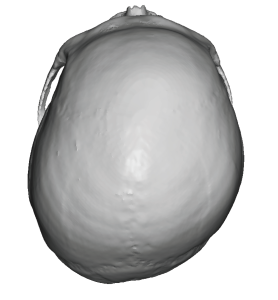
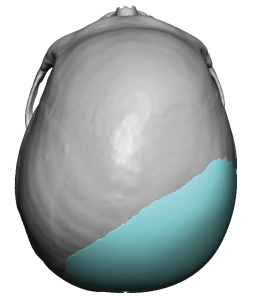
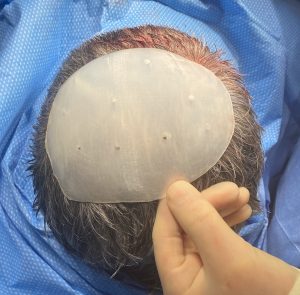
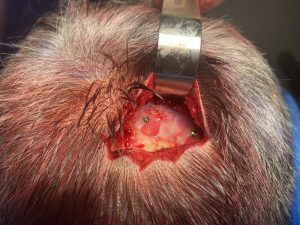
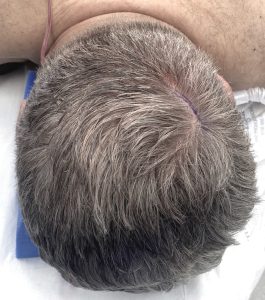
One of the most interesting aspects of this case is that the patient was 75 years old, an age when most people would think such aesthetic issues would seem irrelevant. But the reality is that such skull deformities have bothered such affected patients their entire life and once they discover that the problem can be solved in a 60 minute operation in a safe manner their age becomes unimportant.
Case Highlights:
1) Plagiocephaly is the most common adult head shape concern which usually involves a flatness on one side.
2) Residual mendosal sutures at the occiput in an adult is an uncommon radiographic finding whose significance to the occurrence of plagiocephaly is a known association.
3) The flat upper back of the head can be treated with a custom skull implant based on the shape of the opposite side of the head.
Dr. Barry Eppley
World-Renowned Plastic Surgeon





